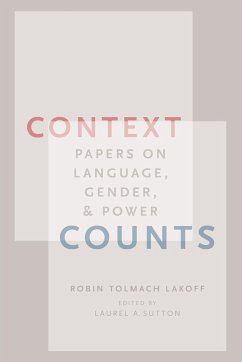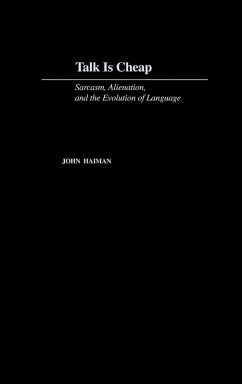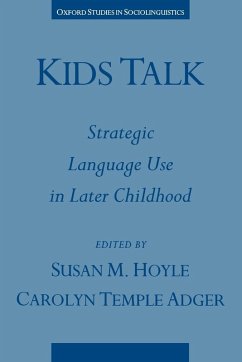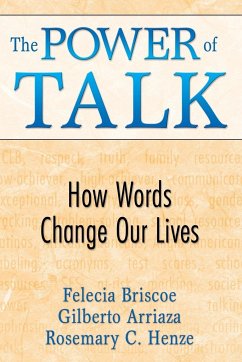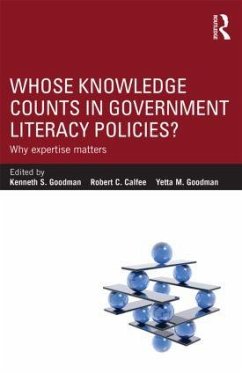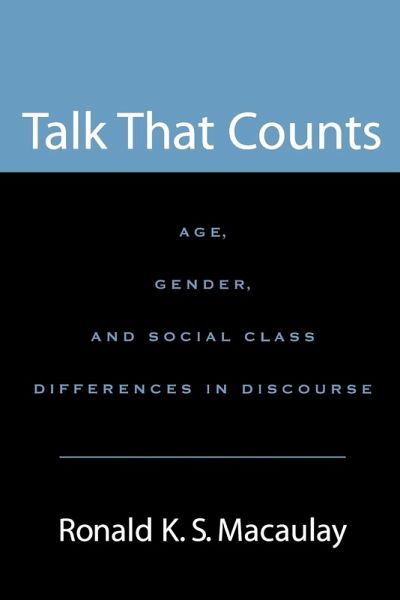
Talk That Counts
Age, Gender, and Social Class Differences in Discourse
Versandkostenfrei!
Versandfertig in 1-2 Wochen
92,99 €
inkl. MwSt.
Weitere Ausgaben:

PAYBACK Punkte
46 °P sammeln!
In "Talk That Counts", distinguished sociolinguist Rinals Macaulay provides a new way of examining sociolinguistic variation. Linguists traditionally take a limited sample of linguistic data from a given population and look at phonological and morphological variables. Macaulay proposes a much different and highly quantitative approach to the study of variation, which correlates features of discourse with three social categories: social class, gender, and age. He uses as data, a sample from 33 speakers of English in Glasgow, and his conclusions indicate that age accounts for the greatest number of differences, followed by gender, with social class accounting for the most variation within a group. Macaulay's work offers a new methodological paradigm to an audience of sociolinguists and others like sociologists concerned with discourse analysis.
Talk That Counts is a sociolinguistic study of variation in discourse employing quantitative methods to explore age, gender, and social class differences in the use of features such as you know, I mean, adverbs, and pronouns. Unlike many studies of discourse variation that focus on a single social factor, Talk That Counts examines age, gender, and social class differences in a gender-balanced sample of middle-class and working-class adolescents and adults, recorded under the same conditions. Differences between adults and adolescents provided the greatest number of statistically significant results, followed by differences between males and females. The smallest number of statistically significant differences were related to social class. The range of variation underlines the need to look at more than a single extra-linguistic variable when examining discourse. It also shows the dangers of generalizing about social class, for example, on the basis of a limited sample (e.g., adolescent boys). In Talk That Counts, distinguished sociolinguist Ronald Macaulay presents an important new approach to the sociolinguistic investigation of discourse variation.






